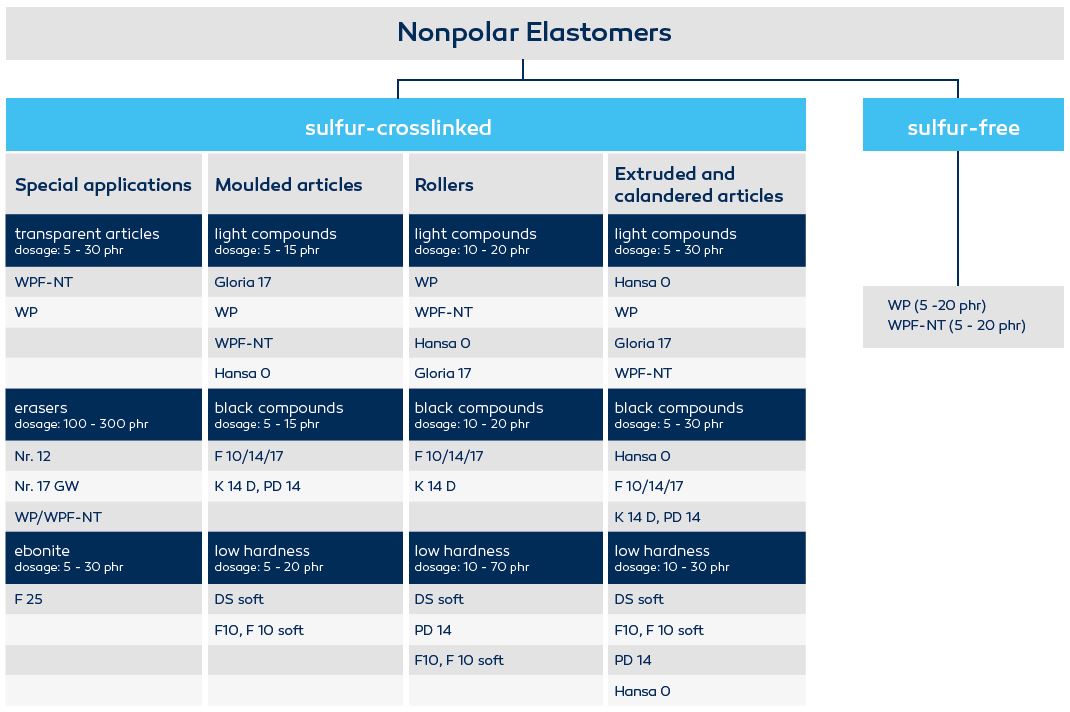Factice – once a rubber substitute, now a functional additive based on renewable raw materials
The basic raw materials for producing factice are renewable, and these mainly consist of different types of rapeseed oil and castor oil cross-linked with sulphur, chlorosulphur or hydrogen sulphide. Other ways of producing factice involve cross-linking with peroxide and isocyanate – a method which has only been mastered by a handful of manufacturers around the world. In addition to these basic raw materials, other additives such as naphthenic oils, paraffinic oils, stabilizers and mineral fillers are used to achieve certain specific physical properties.
For more information, please contact:

The advantages of using factice include:
- Factice can be mixed quickly, easily and homogeneously into rubber using all the standard mixing methods (best done at the beginning of the mixing process)
- Lower mixing temperatures and shorter running times ensure less energy consumption and reduce the risk of scorching
- Better distribution of fillers, increased plasticizer absorption and binding capacity (less sweating)
- Improved processing speeds with better dimensional accuracy and surface quality (i.e. excellent feel, better sanding results)
- Prevents bubbles from forming in molded rubber goods (enhances degassing effects, avoiding the occurrence of air pockets and pores)
- Improved stability facilitates the handling of soft rubber compounds
- Significantly increases the dimensional accuracy of semi-finished and finished products
- Reduces mixing density
- Good electrically insulating properties and improved resistance to dynamic cracking
Nordmann partner DOG has been manufacturing factice now for over 120 years, mixing raw materials and additives with a variety of cross-linking agents at different temperatures to create a wide range of product options. Factice production can take several days and must take place under tightly controlled manufacturing conditions.
DOG’s expertise is the cornerstone of its consistent production of precision-manufactured factice with natural and seasonal raw materials. Depending on the type of factice produced, the content level of renewables will be at least 75%. Over the years, DOG has continued to optimize its sophisticated manufacturing processes to reliably ensure high-quality products.



